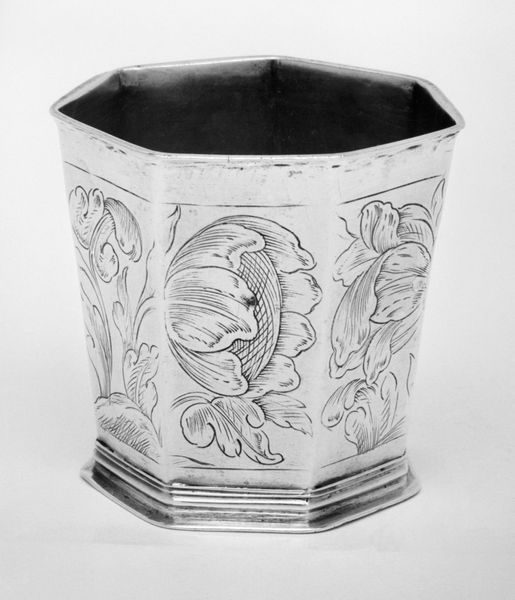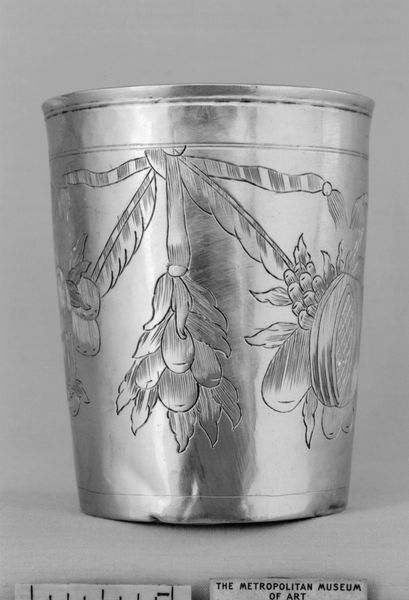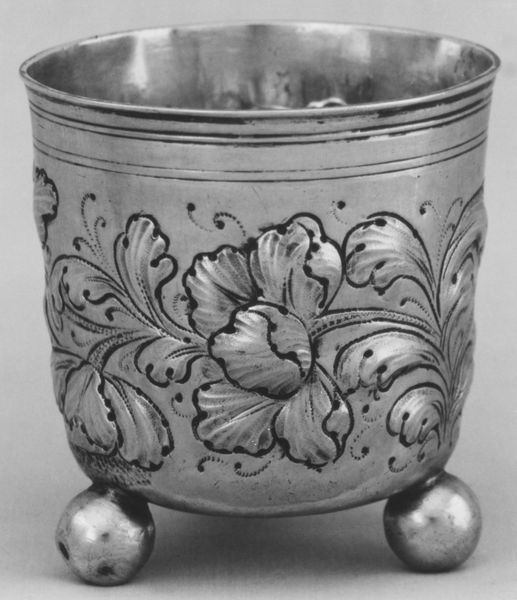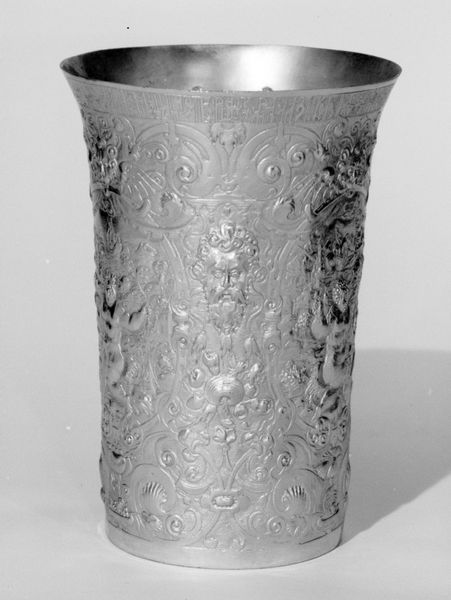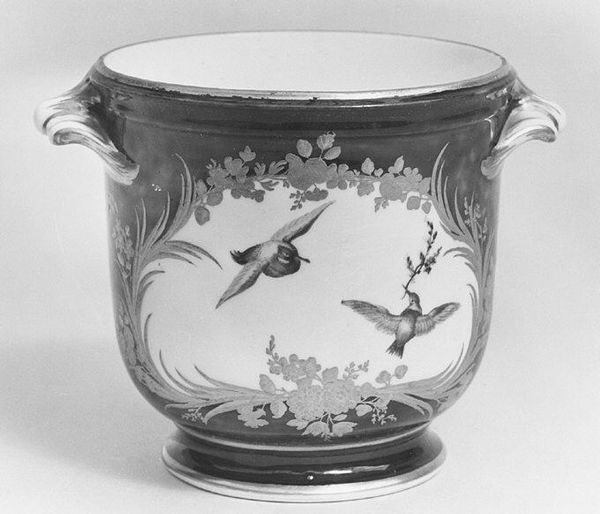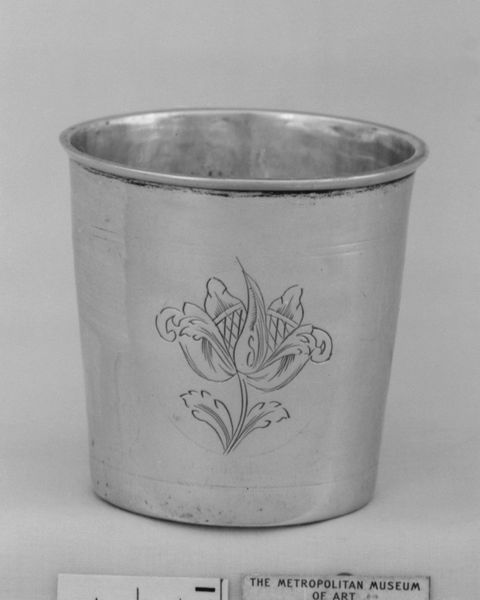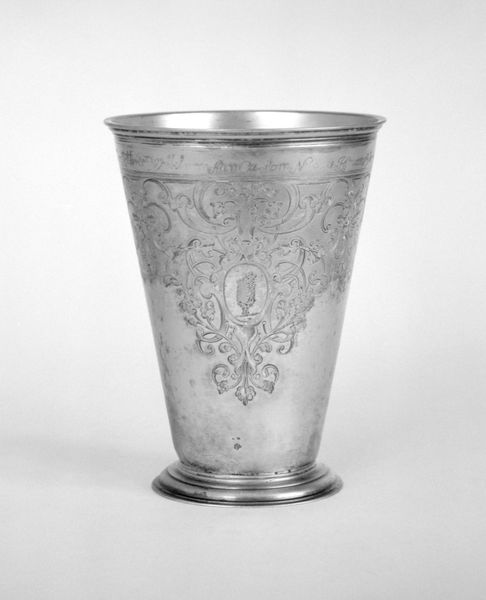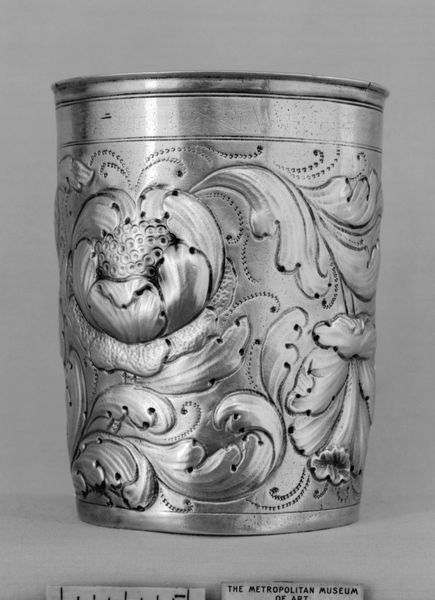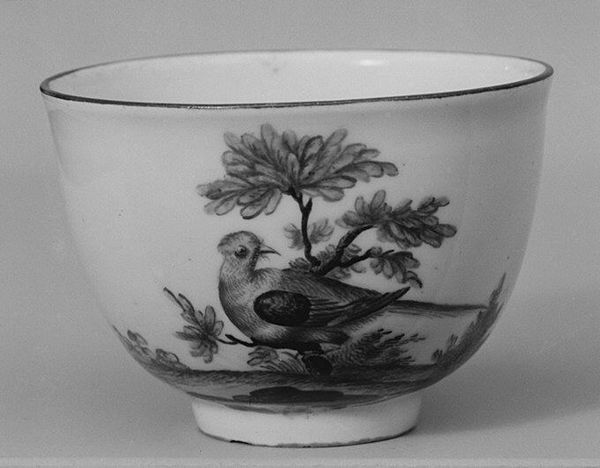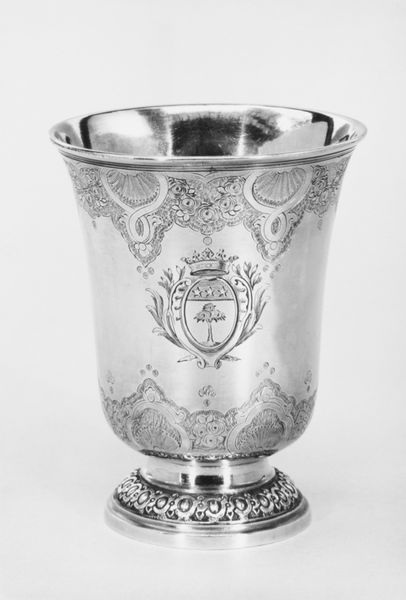
carving, silver, metal, metalwork-silver, sculpture
#
carving
#
silver
#
baroque
#
metal
#
metalwork-silver
#
sculpture
Dimensions: Height: 3 3/8 in. (8.6 cm)
Copyright: Public Domain
Curator: This gleaming silver beaker catches the light. I’m struck by the detail—so meticulously carved! Editor: Yes, there is something simultaneously stark and sumptuous about it, despite its relatively small size. It seems weighty, almost imposing, the images feel significant even if I don’t immediately know what they are. Curator: Well, let’s dive in. What we’re seeing is an 18th-century silver beaker, currently held at the Metropolitan Museum of Art. Notice the pronounced baroque style—the flowing, ornate detailing is so characteristic of the period. Editor: Baroque...so how did social and political circumstances shape a functional piece like this? Curator: Absolutely. The baroque, emerging in the late 16th century, became the visual and performing-arts language of the Counter-Reformation. You have these dramatically ornamented objects becoming part of cultural consolidation for powerful institutions. It’s fascinating to observe the Baroque's expression in something intended for more intimate use than, say, a monumental church. Editor: I notice that there's a phoenix. Would it have held the same symbolic value at that time that it does today? Curator: Quite likely. Across cultures and centuries, the phoenix symbolizes rebirth, resilience, hope. Seeing it prominently featured on a drinking vessel suggests that those themes were actively present in the owner’s mind. The very act of drinking could be seen as symbolic sustenance that supported growth, healing, and aspiration. Editor: What I find so curious, looking at this today, is that combination of the universal phoenix and such culturally specific style. Curator: It encapsulates what it means to exist across different moments in time and to remain open to fresh symbolic interpretations. Perhaps by rethinking this Baroque beaker we are ourselves experiencing a kind of phoenix moment, allowing tradition to revitalize itself anew. Editor: Indeed. And appreciating, too, how objects, no matter how mundane their purpose, serve as potent reflectors of collective experience.
Comments
No comments
Be the first to comment and join the conversation on the ultimate creative platform.
